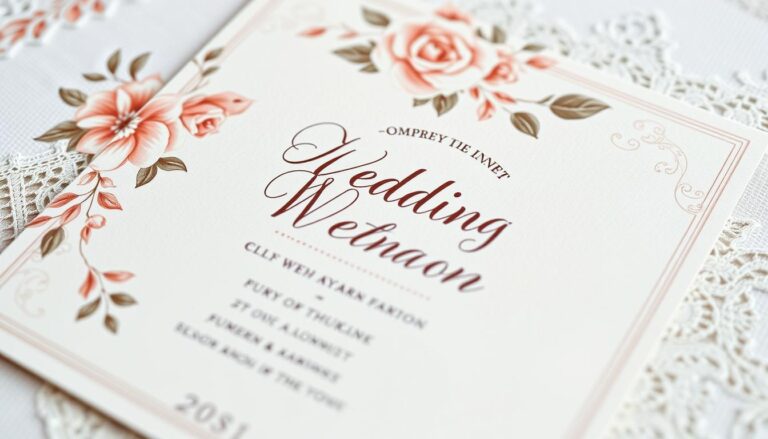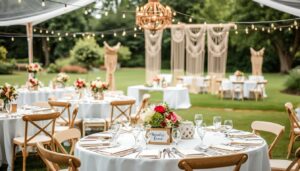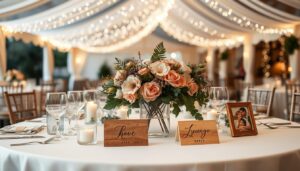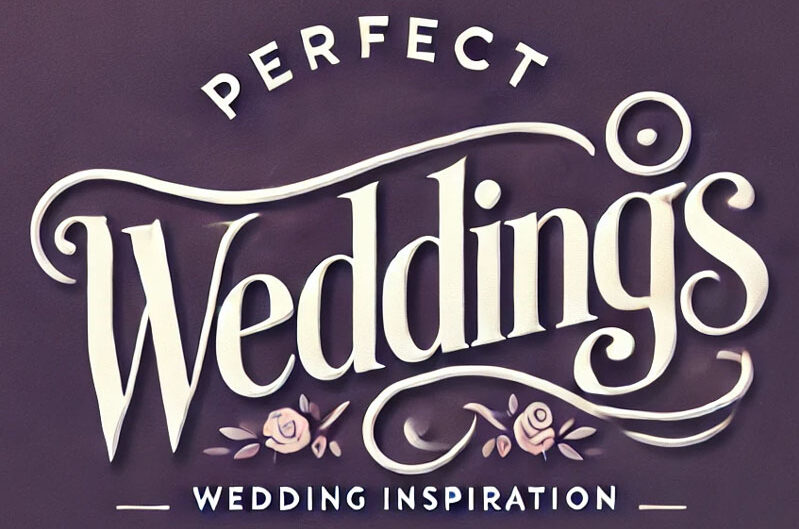Crafting the perfect wedding invitation wording sets the tone for your special day, reflecting your personal style and setting the stage for your celebration. Whether you favor traditional elegance or a more modern flair, this comprehensive guide will help you navigate the intricacies of wedding invitation etiquette and create invitations that captivate your guests.
From the essential elements of wedding invitation wording to exploring traditional and contemporary styles, we’ll dive into the nuances of invitation etiquette and provide you with the tools to personalize your stationery. Discover how to address your guests correctly, craft the perfect reception wording, and master the art of RSVP etiquette. Whether you’re incorporating cultural or religious traditions or seeking creative and unique wording ideas, this guide has you covered.
Throughout this journey, we’ll ensure your wedding invitation wording is cohesive across your entire stationery suite, leaving no detail overlooked. By the end, you’ll be equipped with the knowledge and confidence to craft wedding invitations that truly reflect your love story and set the stage for an unforgettable celebration.
Mastering the Art of Wedding Invitation Wording
Crafting the perfect wedding invitation is an art form that sets the tone for your special day. The wording you choose can convey the formality, style, and personality of your wedding. Whether you opt for traditional wedding invitation wording or a more modern approach, mastering the art of invitation wording is essential for ensuring your guests feel welcomed and informed.
Invitation wording serves several important functions. It formally announces your wedding, provides key details like the date, time, and location, and sets the stage for the overall event. The wording you select should reflect your personal style and elegantly communicate the who, what, when, and where of your big day.
From the opening line to the RSVP instructions, every element of your invitation wording must be considered. Adhering to proper invitation etiquette, while infusing your own unique flair, can be a delicate balance. But with a little guidance, you can craft wedding invitation wording that beautifully sets the stage for your wedding celebration.
Traditional vs. Modern Invitation Wording Styles
When it comes to wedding invitation wording, couples have the choice between traditional, formal language or a more modern, casual approach. Traditional wedding invitation wording often follows a structured, time-honored format, using phrases like “request the honor of your presence” and specific etiquette around who issues the invitation. In contrast, modern invitation wording allows for a more relaxed, personal tone, focusing on setting the mood and style of the celebration.
Couples opting for traditional wedding invitation wording typically choose an elegant, sophisticated look, with a focus on proper etiquette and formality. Modern invitation wording, on the other hand, can range from minimalist to whimsical, incorporating the couple’s unique personality and style. Casual wedding invitation wording may even forgo some of the more traditional elements, prioritizing a friendly, laid-back tone over strict protocol.
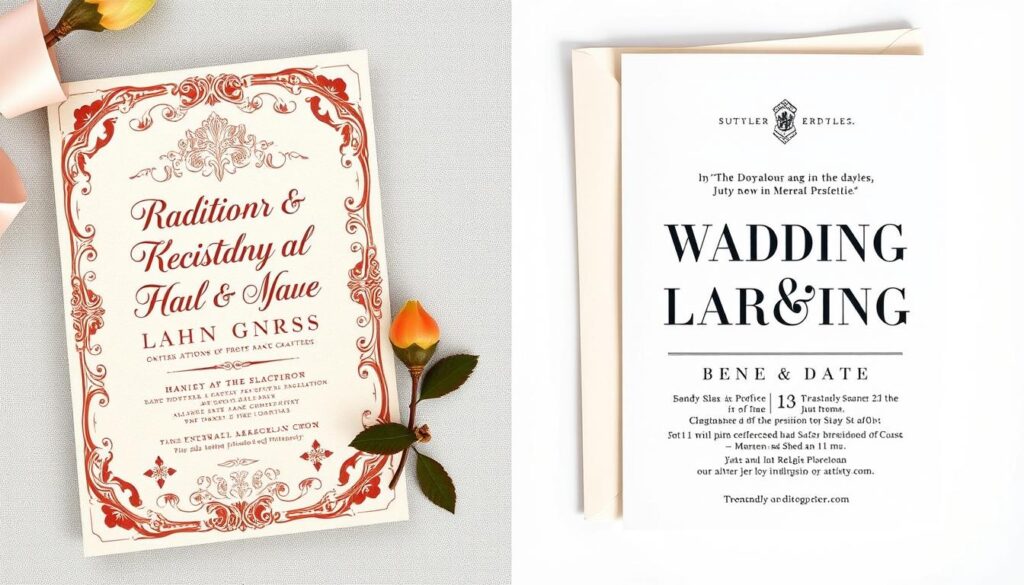
Ultimately, the choice between traditional, modern, or casual wedding invitation wording comes down to the couple’s personal preferences and the overall aesthetic they want to convey. By understanding the different styles, couples can select the approach that best aligns with their vision for their special day.
Essential Elements of Wedding Invitation Wording
Wedding invitation wording is the foundation of your stationery suite, setting the tone for your special day. When crafting the perfect invitation, it’s essential to include key elements that convey the formality, event details, and etiquette expectations. From the host line to the RSVP information, each component plays a crucial role in creating a cohesive and polished invitation.
The host line is where you’ll indicate who is hosting the wedding, whether it’s the couple, their parents, or a combination. This sets the stage for the formal invitation wording that follows. The request line is where you’ll formally invite guests to the ceremony, using phrases like “request the honor of your presence” for a formal affair or “invite you to celebrate” for a more casual celebration.
Providing the essential event details, such as the date, time, and location, is paramount. Ensuring these details are presented clearly and accurately helps your guests plan accordingly. Additionally, including the dress code, if applicable, can help set the tone and manage guest expectations.
Mastering the art of wedding invitation wording takes practice, but it’s a vital step in creating a memorable and meaningful invitation. By understanding the key elements and following formal invitation etiquette, you can craft wording that sets the stage for an unforgettable celebration.
Wedding Invitation Wording
Crafting the perfect wedding invitation wording is an important aspect of setting the tone for your big day. Whether you’re aiming for a traditional, modern, or casual style, the right wording can make all the difference. Explore a variety of wedding invitation wording examples to find inspiration and create an invitation that truly reflects your unique wedding vision.
For a classic and formal affair, traditional wedding invitation wording often includes the formal request of the couple’s parents, the date, time, and location of the ceremony, and a request for the guests’ presence. On the other hand, modern invitation wording allows for more personalized and creative approaches, such as incorporating playful phrasing or incorporating design elements into the text.
If you’re planning a more relaxed and laidback celebration, casual wedding invitation wording can set the perfect mood. These invitations may feature a more conversational tone, with the couple directly inviting guests to join in the festivities. Regardless of your style, the key is to choose wording examples that align with your overall wedding aesthetic and personal preferences.
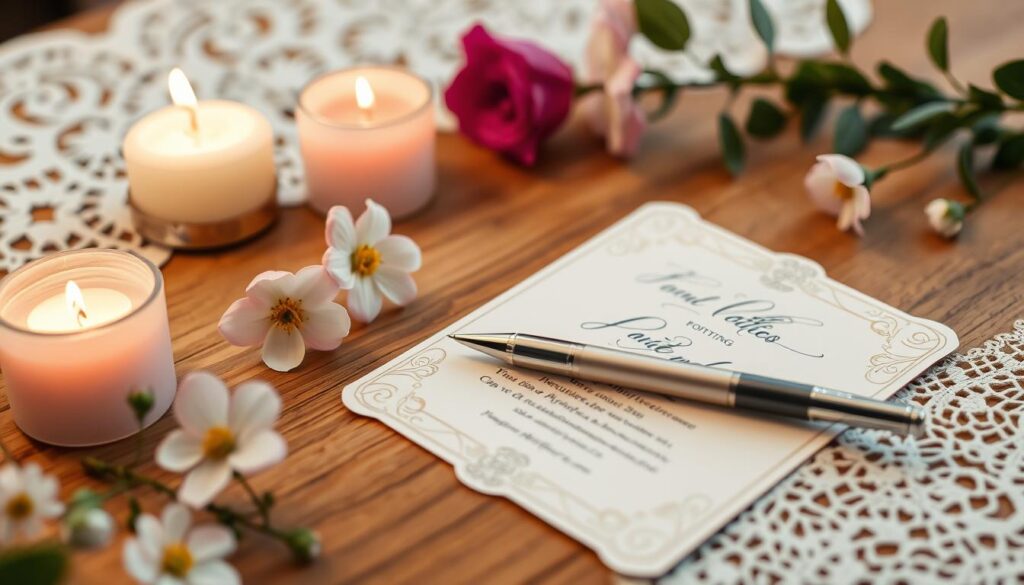
By exploring a variety of wedding invitation wording options, you can craft an invitation that sets the stage for your special day and leaves a lasting impression on your guests. Remember, the wording you choose should reflect your unique love story and the vision you have for your wedding celebration.
Addressing the Invitees Correctly
When it comes to formal invitation etiquette, proper addressing of your guests is crucial. Wording examples for addressing wedding invitations can make the difference between a polished, elegant invite and one that falls short. Whether you’re inviting individuals, couples, or families, it’s important to use the correct titles and names to ensure your guest list is honored accordingly.
For individual invitations, use the person’s full formal name, such as “Ms. Emily Ramirez” or “Mr. Daniel Schneider.” For married couples, address the envelope with both names, e.g., “Mr. and Mrs. John and Jane Smith.” If the couple is unmarried, use “Ms. Jane Smith and Mr. John Doe.” For families, list the parents’ names first, followed by the children, such as “The Smith Family” or “Mr. and Mrs. William and Susan Jones and Family.”
Adhering to these formal invitation etiquette guidelines ensures your guests feel respected and welcomed. By using the proper wording examples, you can create a polished and elegant invitation suite that sets the tone for your special day.
Crafting the Perfect Reception Wording
When it comes to planning your wedding, crafting the perfect reception wording is just as important as the invitation itself. The reception wording sets the tone for the celebratory event and seamlessly complements the overall wedding invitation. Whether you’re aiming for a formal or casual affair, it’s essential to strike the right balance with your reception wording.
For a formal reception, consider wording that exudes elegance and sophistication. Examples could include “The honor of your presence is requested at the reception following the ceremony” or “Please join us in celebrating the marriage of [Couple’s Names] at the reception.” These wording examples convey a sense of formality and set the stage for a refined and elegant event.
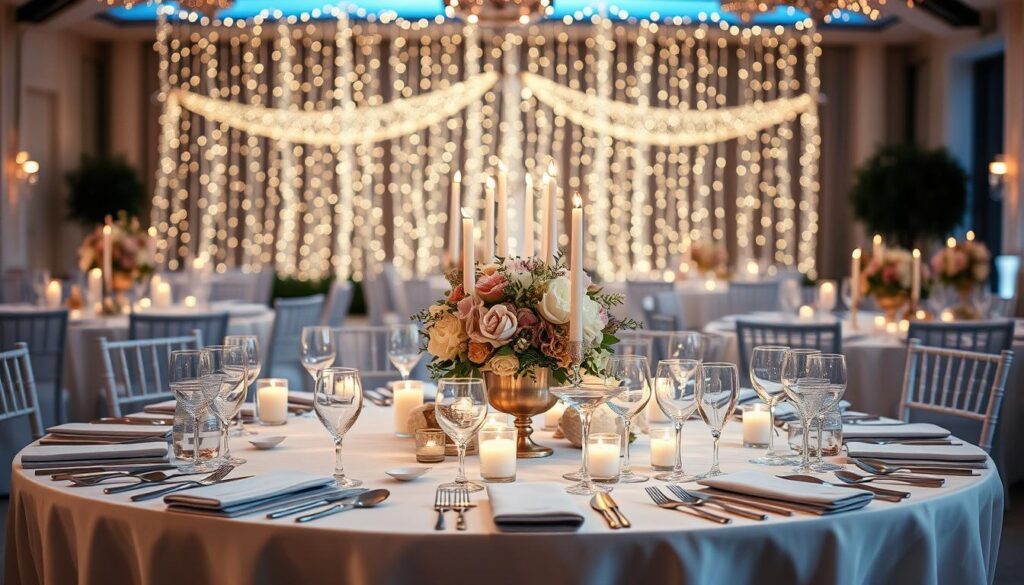
On the other hand, if you’re planning a more casual reception, your wording can be more relaxed and inviting. Phrases like “You’re invited to join us for a celebration of [Couple’s Names]” or “Please come and share in the joy of [Couple’s Names]’ new chapter” can create a welcoming and laid-back atmosphere. These wording examples allow you to personalize the reception and make it feel more intimate for your guests.
Regardless of the formality, the key is to ensure that your reception wording aligns with the overall theme and tone of your wedding. By carefully crafting the perfect reception wording, you can set the stage for a memorable and joyous celebration with your loved ones.
RSVP Wording and Response Card Etiquette
Crafting the perfect RSVP wording is crucial to making it easy for your guests to respond. The RSVP, or “Répondez s’il vous plaît,” is a French phrase that means “please respond.” This simple request sets the tone for how your guests should handle their attendance.
When it comes to RSVP wording, keep it concise and clear. Examples like “The honor of your presence is requested” or “We hope you can join us” are classic and polite options. You can also get creative with a touch of personality, such as “We can’t wait to celebrate with you!” or “Please let us know if you’ll be there to party.”
Response card etiquette is equally important. Be sure to include a pre-addressed, stamped envelope to make it easy for guests to send back their RSVP. If you’re accepting RSVPs by phone or email, provide clear instructions on how to do so. And don’t forget to account for last-minute changes – leave room on the card for guests to note any dietary restrictions or plus-ones.
By mastering RSVP wording and response card etiquette, you’ll ensure a smooth and stress-free process for both you and your guests. With the right approach, your invitees will know exactly how to let you know if they’ll be there to celebrate your big day.
Incorporating Cultural and Religious Traditions
When planning a wedding, it’s essential to thoughtfully consider how to incorporate your cultural or religious traditions into the invitation wording. This ensures your guests feel welcomed and informed about the special elements that will be part of your ceremony.
For instance, if your wedding includes cultural rituals or customs, you may want to mention them on the invitation. This could be as simple as including a line like “The ceremony will include a traditional tea ceremony” or “We kindly request the honor of your presence at our Nikah ceremony.” This sets the stage for your guests and prepares them for the unique aspects of your celebration.
Similarly, if your wedding incorporates religious traditions, you can tastefully reference them in the wording. This helps guests understand the context and feel included, whether it’s a Catholic mass, Jewish Chuppah, or Hindu Mandap ceremony. Phrases like “Please join us for our Christian/Jewish/Hindu wedding ceremony” convey the spiritual elements while maintaining a formal invitation etiquette.
By thoughtfully incorporating your cultural or religious wedding invitation wording, you create a welcoming atmosphere for your guests and set the tone for your unique celebration. Remember to strike a balance between providing information and maintaining the elegant aesthetic of your stationery.
Wedding Stationery Suite: Cohesive Wording Across All Elements
When it comes to your wedding stationery, maintaining a consistent and cohesive look and feel is crucial. This means ensuring that your invitation wording is seamlessly applied across all the elements of your wedding stationery suite, from save-the-dates to thank-you notes. By doing so, you’ll create a polished and professional impression that reflects the overall style and theme of your special day.
Start by establishing the tone and style of your wedding invitations, whether it’s traditional, modern, or a blend of both. This will serve as the foundation for the wording and design across your entire stationery suite. Pay close attention to the language, formatting, and layout, ensuring they are harmonious throughout each piece, from RSVP cards to ceremony programs.
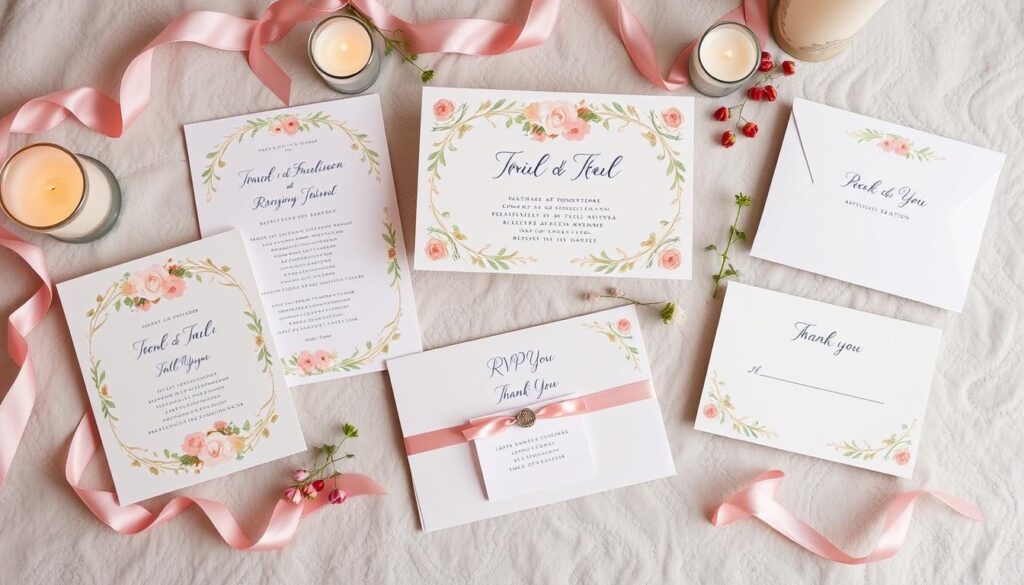
Consistency in your wedding wording not only enhances the visual appeal of your stationery but also helps to create a sense of cohesion and unity. Your guests will appreciate the attention to detail and the seamless flow of information, making the overall experience more memorable and enjoyable. By investing time in crafting the perfect wording for your wedding stationery, you’ll set the stage for a truly unforgettable celebration.
Creative and Personalized Invitation Wording Ideas
Your wedding invitation sets the tone for your special day, so why not make it truly unique? Explore creative and personalized approaches to your wedding invitation wording that showcase your love story and wedding vision. Incorporating custom elements can transform your invitations into one-of-a-kind keepsakes that your guests will cherish.
Start by reflecting on your relationship – how you met, your shared interests, or meaningful moments you’ve experienced together. Weave these personal details into your wedding invitation wording to give it a heartfelt touch. Consider using playful phrasing, romantic poetry, or even inside jokes that only you and your partner would understand.
Another way to personalize your wedding invitation wording is by highlighting the cultural or religious traditions that are important to you. This could include using specific language, incorporating symbolic imagery, or highlighting special rituals that will be part of your ceremony. By incorporating these elements, you’ll create an invitation that truly speaks to your unique wedding celebration.
Don’t be afraid to get creative with the overall layout and design of your invitations as well. Experiment with unique formats, unconventional shapes, or eye-catching typography to make your stationery stand out. The options are endless when it comes to crafting personalized wedding invitation wording that reflects your love story and wedding vision.
Proofreading and Finalizing Your Wedding Invitation Wording
As you prepare to send out your wedding invitations, it’s crucial to carefully proofread the wording to ensure it’s flawless. Attention to detail is key when it comes to creating a professional and polished invitation. Take the time to double-check every aspect, from the names and dates to the spelling and formatting.
Following best practices for finalizing your invitation details can help streamline the mailing process and avoid any last-minute hiccups. Consider enlisting a trusted friend or family member to review the invitations, as a fresh pair of eyes can often catch what you may have missed. Additionally, be mindful of formal invitation etiquette to ensure your guests receive a cohesive and elegant invitation suite.
By meticulously proofreading and finalizing your wedding invitation wording, you can rest assured that your guests will receive a flawless invitation that sets the tone for the entire celebration. This attention to detail will not only impress your loved ones but also contribute to a stress-free and seamless mailing process.
